A recent piece done by reporter Armen Keteyian on CBS Sunday Morning this last weekend has a variety of industry leaders up in arms objecting to this one-sided look at the trading card industry. Keteyian spent some time at a trading card show in New Jersey and reported that the industry is on the brink of death. I couldn’t be less worried. I heard the same thing in 2009 when Sports Illustrated produced a similar piece. I have seen lazy reporting like this before. Back then I put out a story refuting those claims, not realizing all the exciting new things that could happen in less than three years. It is interesting to look back at that now and I’m inspired by what is still to come for the industry.
The business certainly is different than it was in the late ‘80’s and early ‘90’s. It had a boom, but it is not on the brink of death. If anything, it has stabilized over the last year in particular and is actually poised for growth. There are a variety of encouraging signs and for those of you who were panicked by Keteyian’s story, I hope to put your fears to rest. Here is my NEW Top Ten Reasons Why I Know the Sports Card Industry will be Fine:
10. YouTube – Sports card shows like the one Keteyian visited are dying off not because collectors are gone, they are just changing the way they collect opting for the convenience of opening cards in their home in some cases. They still share their experience with the product however through YouTube. In 2009 I shared that if you search YouTube for “Upper Deck Box Breaks” you would find approximately 15,000 videos. Today that number has almost doubled. Collectors are producing videos where they open packs, boxes and cases then sharing what they get online. And the most interesting part is that other collectors watch these videos. Many of these videos have thousands of views and all they consist of in most cases is a pair of hands and trading cards.
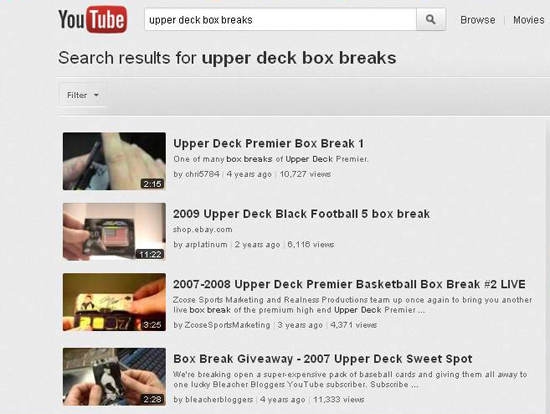
Collectors spend a lot of time posting videos they make opening new Upper Deck packs, but they spend even more time watching these videos.
9. Diversification – Manufacturers realize that in order to reach new fans and collectors it is important to diversify the subject matter for trading card releases. At Upper Deck we still produce trading cards of baseball, football, basketball and hockey players, but we have expanded our offerings to trading cards of soccer, golf, MMA, boxing, lacrosse, surfing and other extreme sports that interest sports fans.

When you have exclusive agreements with athletes like Michael Jordan and Tiger Woods, it doesn't have to just be about baseball cards anymore.
Additionally in some of our new trading card sets like Goodwin Champions, we have had tremendous success with producing non-traditional cards that are extremely collectible. Who would have thought Animal Patch trading cards and Entomology cards that include real insects would be popular with collectors? But they have and routinely sell for double and even triple digits. These quirky and weird cards are helping to create fun stories about our industry and bring new collectors in.
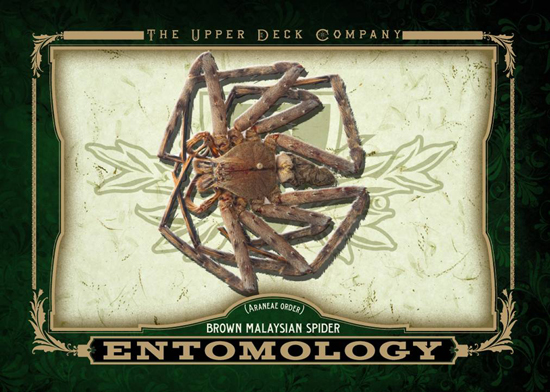
It's hard to call this a trading card, but people collect cards like these in huge numbers. There is a real wow factor with some of the new trading cards Upper Deck creates.
8. The Las Vegas Industry Summit – There was a time when this annual trade show comprised of the industry’s top trading card shops really was on the brink of death. It was held in Hawaii and it became increasingly more difficult for retailers and manufacturers to jet out there for this annual event. It has been resuscitated by a gentleman named Kevin Isaacson who, along with his team, have made it an extremely relevant show that serves to educate and inspire shop owners and manufacturers on how we can make this hobby better. If we are approaching “the likely death of a national pastime” as Keteyian asserts, then what are all these small business owners doing here?

The business is alive and well with hobby shop owners attending the Las Vegas Industry Summit in an effort to learn, share and grow.
7. The Upper Deck Volunteer Alliance – In 2010 Upper Deck created the Volunteer Alliance program. As we engaged more with collectors through social media, we found there was a core group of passionate collectors who wanted to work to make this hobby better. We decided to mobilize them and we routinely use them as a resource to help get the word out about new programs. These collectors are eternal optimists who are inspired to use all the resources they can to help make the hobby better, and Keteyian would be surprised to know that many of them are younger collectors.
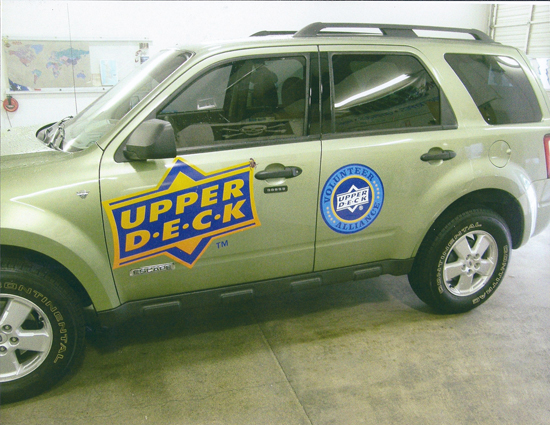
Upper Deck's Volunteer Alliance members are very passionate about the hobby. One member created huge Upper Deck decals he applied to his car to help promote the hobby.
6. Improved Distribution – Last year Upper Deck changed the way we distribute our products to help eliminate a gray market that was emerging. We felt it was important to partner with the right distributors and only sell to brick and mortar retailers. It was not fair to have new Upper Deck product get into the hands of online resellers or show dealers who do not operate with the same overhead as brick and mortar retailers so Upper Deck decided to level the playing field there. This is likely one of the reasons the show Keteyian visited is struggling. With this change however, we are seeing more shops setting up at shows like the National. With these changes retailers compete less on price and more on service. The results have been incredibly positive for Upper Deck and our network of Certified Diamond Dealers and Authorized Internet Retailers.
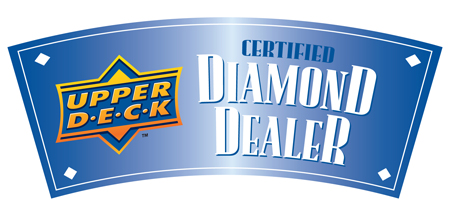
Upper Deck's network of Certified Diamond Dealers work to positively promote trading cards with their customers.
5. National Hockey Card Day – National Hockey Card Day is one of the many things that I believe is good and right with this industry. It is a program where fans can go to their local hobby shop and get a FREE pack of Upper Deck Hockey Cards. This season we brought the program to the United States for the first time ever and we were really pleased with the response. It will be back in 2013 and it serves as a fun way to get trading cards in the hands of kids and sports fans that may not normally collect.
4. Cards2Kids – One of the most disturbing parts of Keteyian’s story was the last sound bite from one of the show dealers he interviewed who said flatly, “Kids don’t care.” Well I’m here to tell you that they do and Upper Deck is proud to be helping to support one of them. John Makowiec is a high school kid who does care about trading cards and also getting them in the hands of other kids who may not have the opportunities to collect. He started a charity called Cards2Kids and it has grown leaps and bounds since their inception. They have collected over one million cards that they donate to children’s hospitals and Boys & Girls Clubs. John’s story is really inspirational, but I doubt Armen has a feature planned on him. Positive stories like this don’t get ratings.
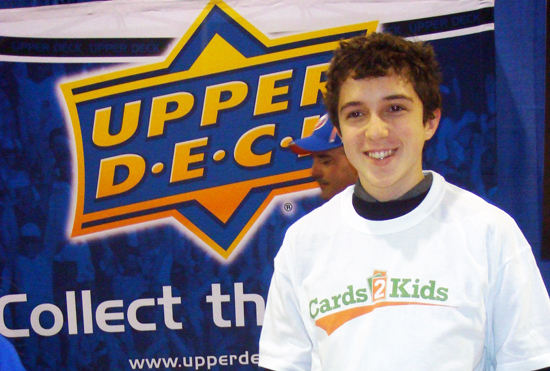
Believe it or not kids do still care about cards. Just ask John Makowiec who started Cards2Kids to share the hobby with kids.
3. Stability – In 2009 I shared that we worked with 1,200 active sports cards shops in the United States and 300 in Canada. We were in the midst of a terrible recession and the Sports Illustrated story said that shops were dying off at an alarming rate. I am pleased to share that is not the case. Today we work with over 1,100 active sports shops in the United States and close to 400 in Canada. There are many more shops still out there as well that do not work direct with Upper Deck. These small businesses not only survived the recession, but have grown in Canada thanks to a very healthy hockey card market. New shops are actually springing up which leads me to the next point.
2. Growth – Over the last year our hobby sales team has received over 200 emails about opening a hobby shop and working with Upper Deck. This is largely a result of the distribution change we made where those looking to start their own small business are coming to realize there is money to be made in operating a store. We had so many inquiries we realized we need to do a better job of providing information on how to open a trading card shop. This is why we recently began a series on our blog featuring industry experts on how to do just that. By providing these small business owners the information they need to be successful, I’m excited to see what this industry might look like three years from now when the next negative story comes out on our industry.
1. Innovation – It is one of the cornerstones of what we do here at Upper Deck. We are pressing the envelope about what a trading card is by continuing to produce some of the most innovative cards in the industry. In 2009 I never realized all the amazing innovations we would have hit the market between then and now. Here are just some of the cards that show how we are taking trading cards to the next level here at Upper Deck. For us it is important to continue to capture the imagination and interest of collectors and ultimately bring them closer to the game.
Evolution Video Cards – Yes, there are actually trading cards now that feature video highlights of your favorite players including Michael Jordan. Upper Deck launched Evolution video cards in 2011 Upper Deck Football and the basketball versions recently released in World of Sport.
Booklet cards – One of the biggest problems for innovating a trading card is you run out of space really quick. Well Upper Deck has put out some amazing booklet cards the last couple seasons that expand to show some amazing content in releases like Exquisite and SP Legendary Cuts Baseball.
Museum Collection – Originally released in 2011 Goodwin Champions, the Museum Collection cards are basically shadow boxes housing extremely rare materials. In 2012 Goodwin Champions the Museum Collection cards will have a Civil War theme that should be extremely compelling.
Exquisite Dimension – These cards are not out yet and this mock up really doesn’t do them justice because they are basically 3-dimensional cards that house the athlete’s signature on clear acetate at an angle. The autograph appears to be floating in air. These are truly show stoppers and they should dazzle collectors when they are discovered in packs this summer.
So is this “house of cards” about to topple? Not at Upper Deck. We are poised to continue innovating and engaging our customers. And as I shared last time, trading cards will go on. There is something indescribable about the bond between a father and child where fond sports memories are intertwined with that 2½-by-3½ trading card. There is something wonderful about trying to stop your hands from shaking after you open a pack of Upper Deck cards and discover an autograph card of your favorite player. It’s an experience to some, an investment to others, a business to the rest, but everyone with an affinity for the hobby got involved with it because it’s fun. And industries that provide their consumers with fun are not going anywhere. They are here to stay.











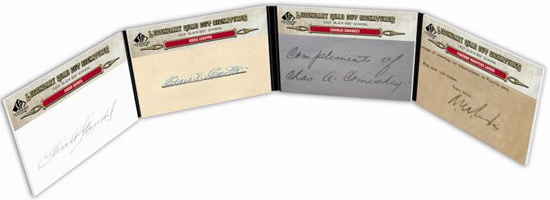
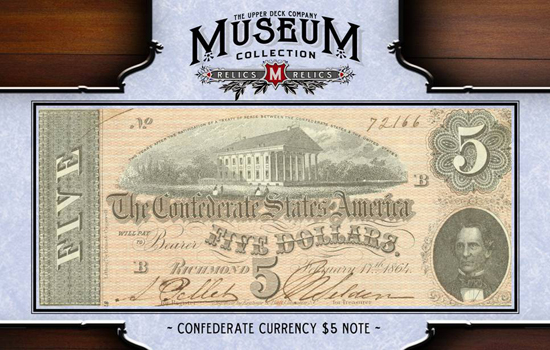



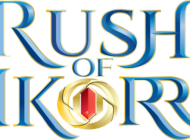
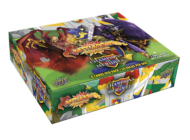

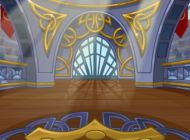

9 Comments
As a member of an online group who do group breaks 3 days a week I have to say I don’t see the industry as dying but I do see that it is changing and evolving rapidly. 35 years ago as a kid buying wax packs never did I imagine that 35 years from now I would be involved in a group of people from around the world all watching someone open packs, boxes and cases of cards with the same feeling in my stomach that I had opening the pack myself 35 years earlier. The internet has allowed us to take a hobby and share it with people from around the world making friends we never knew we could make. Through blog tv and online breaks I have met some amazing people from all corners of the world and have shared in an amazing hobby which will not fade. Just ask anyone in our group most of whom enjoy the hobby for all the same reasons they did years earlier but also some who have just found the hobby through this new online phenomenon. We the collectors will not go away, we may change the way we enjoy our hobby but it will always remain that a hobby to be enjoyed by many…
I disagree with the Diamond program, it will be the death of the card shows, to think these card show dealers do not have expenses as the brick and mortar is crazy. They do and they only have two to three days to make their income, not 6-7. Bad idea on Upperdecks part, if anything you have reduced your exposure and many show dealers just dismiss your product now.
That reporter was as qualified to do a story on the card industry as I am to report on NASA. There wasn’t even enough research done to produce a story.
If turning millions of dollars in sales is the definition of “dying”, I hope I get terminal tomorrow. This guy needs to broaden his scope for research before spewing out a half-story.
Great article Chris i personally believe the industry is thriving. This past weekend i got to see first hand from the other side when I helped Wayne from Waynes sportscards out at a local show. It was inspiring to see the amount of people come out to the show and to engage in such passionate conversation with these people and to see just how alive the hobby is.
Well being a customer since 1991-2012 and collector since the mid 80’s i have seen many changes good and bad. The innovation and rarity of some cards made the hunt even better.
I agree that brick and mortar had a higher overhead, but that is like saying no you have to buy your food at the grocery store and see if you can sell it for a profit. I had bought cards and sold at fleamarkets trade shows ect and paying $450 for a weekend show is alot of overhead to me and cant even do it anymore as after the 3 months are up and i can buy cards they are either too expensive or the supply has dried up.
I will stick with companies who make it fair for all not just those that can afford a store. So in all you have 1 less customer but kind of ruined it for me as the collector also, and am sure there is many more out there so i see a big decline in the future.
Great write up Chris. And well made points.
Maybe the interviewer only saw cards made by Panini. Then I could see him coming to that conclusion.
Chris, I couldn’t agree with you more. As one of those small business owners, my store celebrating our 30th year in this hobby this year, I’ve seen the good times & I’ve seen the bad. This is one of the most optimistic times in years. I do post weekly Box Breaks and my YouTube Channel currently has over 35,000 hits. I do Facebook Contests and my facebook page, not doing internet sales but instead promoting my store, has over 300 friends. Talk about kids? In the past 5 years, my store has conducted over 400 free seminars for groups of children, educating them on the hobby of sports card collecting. My Summer Essay Contest in the past 9 years has received over 600 hand written essays from local children. Four years ago over 75 children cast ballots in a mock Presidential Election and I expect more this year. Do adults still collect? This weekend I will have over 25 in my store for 3-1/2 hours taking part in a Pack Wars Contest. I expect triple that in May for a special Pack Wars celebrating our 30th year. Maybe the show scene isn’t what it was in 1995 but did he step foot into a solid hobby card store? I don’t thinks so, and yet my door is always open. Why is it that the doubters never ask us???
Great article – I agree the piece was poorly researched and just took an idea that the card hobby was dying and ran with the that assumption as correct.
I agree with the overall premise of all of your points except #6. That program is not a good thing for the hobby. Why is it good to say “only fair to sell cards to those with Brick and Mortar overhead”. Business decisions shouldn’t be made based on fairness – they should be made based on factors that determine the best business decision. If an online distributor is able to reduce overhead – shouldn’t you applaud that as opposed to punishing them for this abstract idea of fairness? Shouldn’t the fact that they have reduced overhead mean they can get your product to your consumer at a lower price – which should help the other 9 good points you make above (more money for consumers to spend, more product bought, more resources available for things like innovation)?
10 years ago Barnes & Noble and Borders were the two largest book retailers. Was the fact that online outlets like Amazon not having brick and mortar “unfair”? No – it was a legitimate competitive advantage, and it’s a big factor in why only one of those brick and mortar stores are still around. It also isn’t a coincidence that the one still standing is B&N – who created its own very good online presence and developed the Nook to compete in areas so it wasn’t only Brick and Mortar.